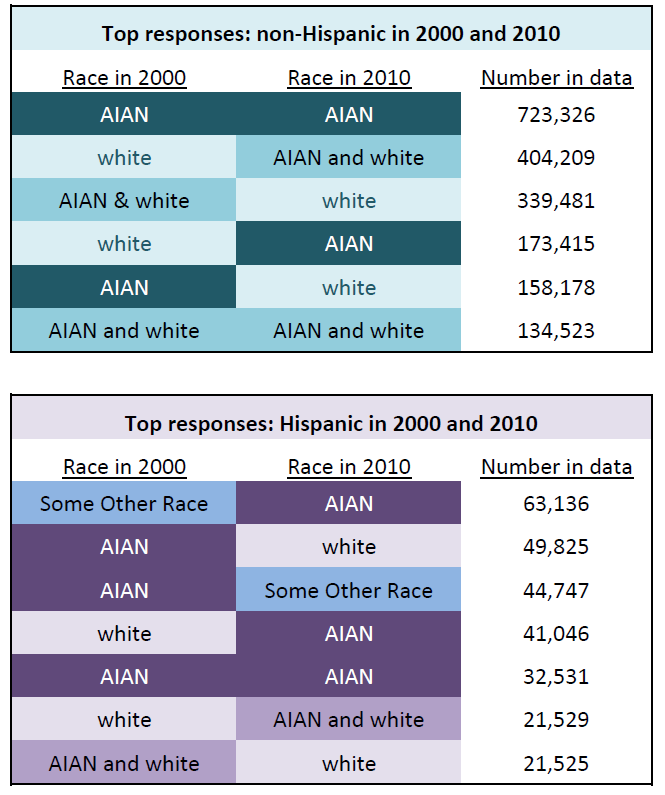Race Response Changes by American Indians and Alaska Natives Between the 2000 Census and 2010 Census
Race Response Changes by American Indians and Alaska Natives Between the 2000 Census and 2010 Census
Renuka Bhaskar, Researcher, Center for Administrative Records Research and Applications (CARRA); Carolyn Liebler, Ph.D., Assistant Professor of Sociology, University of Minnesota; and Sonya Rastogi, Ph.D., Senior Researcher, CARRA
Recent Census Bureau research highlights the extent to which people’s race and Hispanic origin responses changed between the 2000 and2010 Censuses. The American Indian and Alaska Native (AIAN) group is among those with a relatively high level of race response change. In this new working paper, we examine characteristics of people who reported (or were reported by someone in the household as) AIAN in 2000 and 2010, in comparison to people who reported AIAN in only one of those censuses.
We use anonymized linked data from 2000 and 2010 to study race response stability and change for 3.1 million AIAN people. We also use supplementary information for about 188,000 of them who participated in the American Community Survey (ACS) at some point from 2006 to 2010. Note that the linked data used in our study are not nationally representative.
We find substantial race response change among non-Hispanic and Hispanic AIAN people. Of those who reported non-Hispanic single-race AIAN in 2000 or 2010, just over half (53 percent) had the same race and Hispanic origin responses in both censuses. Among Hispanic AIANs and AIANs who reported more than one race, fewer than one in seven had the same race and Hispanic origin responses in both censuses. An implication is the number of people who ever report AIAN is much larger than the number reporting AIAN at one point in time.
In the chart below, we show the most common response patterns. A number of AIANs reported white in both censuses but added or dropped the AIAN response in one census. Others changed from one single race (AIAN) to or from another single race (for example, white).

For those who also participated in the ACS, we explore a wide range of characteristics to understand similarities and differences between those who joined, those who left, and those who stayed in the AIAN response category. We find, for example, those who were consistently reported as AIAN more often reported an enrolled or principal tribe, lived in an area with a relatively high number of AIANs, and reported AIAN ancestry.
We also find that people who made a particular response change (for example, from Hispanic single-race AIAN in 2000 to Hispanic single-race white in 2010) were similar to those who made the inverse change (Hispanic single-race white in 2000 to Hispanic single-race AIAN in 2010).
There are substantial dynamics in race reporting among American Indians and Alaska Natives.
Researchers studying this important group will need to take into account the possibility of response change in research design and when interpreting results.
Our paper is available at:



